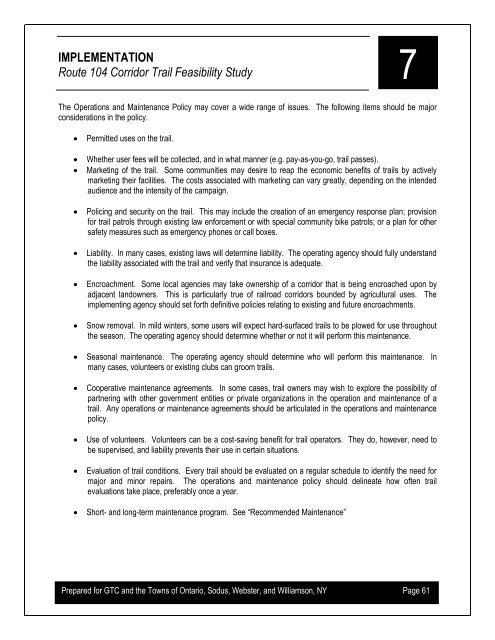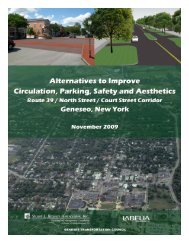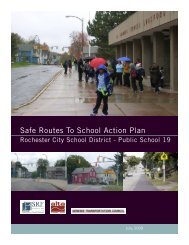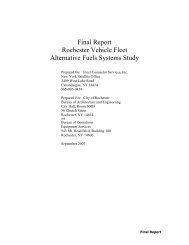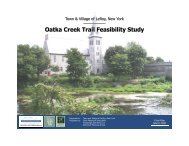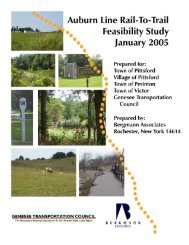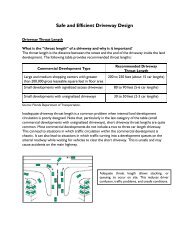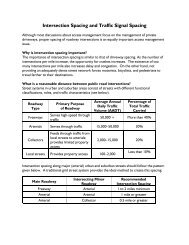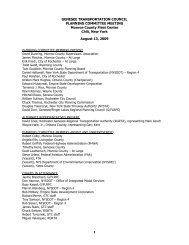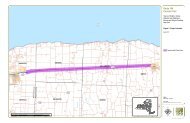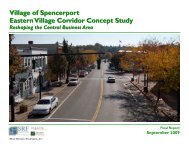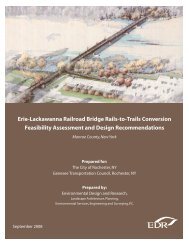Route 104 Corridor Trail Feasibility Study - Genesee Transportation ...
Route 104 Corridor Trail Feasibility Study - Genesee Transportation ...
Route 104 Corridor Trail Feasibility Study - Genesee Transportation ...
You also want an ePaper? Increase the reach of your titles
YUMPU automatically turns print PDFs into web optimized ePapers that Google loves.
IMPLEMENTATION<br />
7<br />
<strong>Route</strong> <strong>104</strong> <strong>Corridor</strong> <strong>Trail</strong> <strong>Feasibility</strong> <strong>Study</strong><br />
The Operations and Maintenance Policy may cover a wide range of issues. The following items should be major<br />
considerations in the policy.<br />
Permitted uses on the trail.<br />
Whether user fees will be collected, and in what manner (e.g. pay-as-you-go, trail passes).<br />
Marketing of the trail. Some communities may desire to reap the economic benefits of trails by actively<br />
marketing their facilities. The costs associated with marketing can vary greatly, depending on the intended<br />
audience and the intensity of the campaign.<br />
Policing and security on the trail. This may include the creation of an emergency response plan; provision<br />
for trail patrols through existing law enforcement or with special community bike patrols; or a plan for other<br />
safety measures such as emergency phones or call boxes.<br />
Liability. In many cases, existing laws will determine liability. The operating agency should fully understand<br />
the liability associated with the trail and verify that insurance is adequate.<br />
Encroachment. Some local agencies may take ownership of a corridor that is being encroached upon by<br />
adjacent landowners. This is particularly true of railroad corridors bounded by agricultural uses. The<br />
implementing agency should set forth definitive policies relating to existing and future encroachments.<br />
Snow removal. In mild winters, some users will expect hard-surfaced trails to be plowed for use throughout<br />
the season. The operating agency should determine whether or not it will perform this maintenance.<br />
Seasonal maintenance. The operating agency should determine who will perform this maintenance. In<br />
many cases, volunteers or existing clubs can groom trails.<br />
Cooperative maintenance agreements. In some cases, trail owners may wish to explore the possibility of<br />
partnering with other government entities or private organizations in the operation and maintenance of a<br />
trail. Any operations or maintenance agreements should be articulated in the operations and maintenance<br />
policy.<br />
Use of volunteers. Volunteers can be a cost-saving benefit for trail operators. They do, however, need to<br />
be supervised, and liability prevents their use in certain situations.<br />
Evaluation of trail conditions. Every trail should be evaluated on a regular schedule to identify the need for<br />
major and minor repairs. The operations and maintenance policy should delineate how often trail<br />
evaluations take place, preferably once a year.<br />
Short- and long-term maintenance program. See ―Recommended Maintenance‖<br />
Prepared for GTC and the Towns of Ontario, Sodus, Webster, and Williamson, NY Page 61


